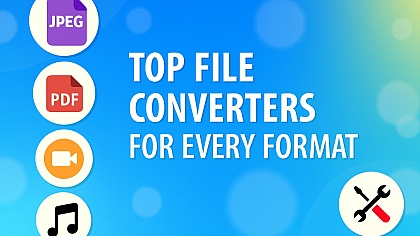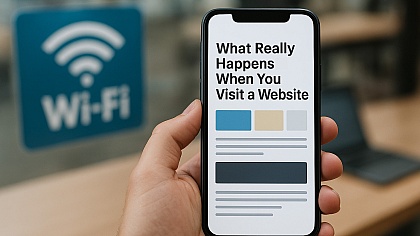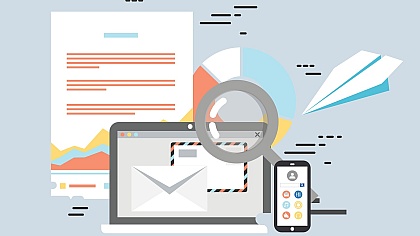
How Much Does It Cost to Build a Full Ecommerce Website?
Figuring out an e-commerce website's cost isn’t simple, as it can vary greatly based on the site’s complexity, platform choice, design needs, and any extra features or integrations. The initial setup is just one part of the investment—ongoing costs for maintenance, updates, marketing, and scaling as your business grows are also important to keep in mind.
E-commerce website prices range widely, from as little as $50 to tens of thousands of dollars, particularly if you’re aiming for a high-performing, feature-rich store. When considering how much an e-commerce website costs, it’s important to know that many factors can affect the final price. That’s why there isn’t a simple answer to the question. Instead, prices can vary a lot based on what your business needs.
The platform you select plays a crucial role in shaping your e-commerce experience. SaaS solutions such as Shopify and BigCommerce come with a subscription model, bundling hosting and various features into a convenient package. In contrast, open-source options like WooCommerce and Magento require more effort to set up and customize, but they provide greater flexibility. For those seeking maximum personalization, opting for a fully custom-built website is an option, though it typically involves higher costs.
Next, the size and complexity of your website are also important. If you plan to sell many products, have advanced search options, complicated shipping requirements, or support for multiple languages, the cost will go up.
Additional features or integrations will impact your overall costs. These might include social media tools for customer relationship management, email marketing, SEO, or social media integration. While such enhancements can significantly boost your website’s functionality and performance, they will also increase the total expense.
Finally, the price will depend on the collaboration option you will choose. Partnering with an agency can provide professional expertise and ensure a polished outcome. While this option may come at a higher price than freelancers, the benefits of quality and experience can outweigh the initial investments. Outstaffing lets you hire remote professionals to work on specific tasks or projects while maintaining control over your team's direction.
Custom designs from expert dedicated Shopify developers and Shopify Plus developers are usually more expensive, but they can significantly improve user experience and increase sales. If you prefer more control, building an in-house team of developers and designers is an option that allows for greater flexibility but requires more time and resources to assemble a skilled team.
Here’s a general breakdown of the costs involved in creating an e-commerce website:
Website Hosting

Hosting costs for an e-commerce website can range from $2.49 per month to over $1,000, depending on factors like how much traffic your store gets and any extra features you might need, like automated backups. Every online store needs good hosting to store its files and a domain name, which acts as its digital address.
There are two main types of hosting for e-commerce stores:
- SaaS Hosting: This is when a platform like Shopify or BigCommerce handles your hosting for you, including security and updates, making setup simpler.
- Self-Hosting: This option lets you pick your own hosting provider and gives you more control, but you’ll need to manage things like security and server settings yourself.
The best option depends on your store’s needs and how much control you want over your hosting.
Payment Solutions

A payment processor is a service that handles transactions, allowing customers to buy your products. Every e-commerce store needs one to accept payments from credit and debit cards, as well as other smart payment options.
The cost of payment processing varies based on your e-commerce platform. For instance, the Shopify Basic plan charges a fee of 2.9% plus 30¢ per transaction for online credit card payments, while the Advanced Shopify plan has a lower fee of 2.4%. If you process payments in person, the fees are typically lower because there's less risk of fraud.
All Shopify plans include Shopify Payments, which lets you start accepting payments immediately. Once you enable Shopify Payments, you can accept credit cards and popular payment methods like Shop Pay, Apple Pay, and Google Pay.
Offering Shop Pay at checkout makes it easier for customers to complete their purchases since it saves their payment and shipping information.
Cost Breakdown for E-commerce Web Design
Did you know that it takes just about 50 milliseconds (0.05 seconds) for someone to form an opinion about your website? This quick first impression is crucial because shoppers make purchases based on trust, and good branding can help build that trust instantly.
E-commerce platforms like Shopify offer easy-to-use templates that let you set up your store quickly and affordably. Shopify Themes come with built-in tools to customize your site’s layout, colours, style, and other settings.
These templates include everything you need to start your online store:
- Homepage
- Product pages
- Shopping cart
- Checkout page
- FAQ page
- About page
Shopify Themes provides over 100 free and paid options, helping you find the perfect look and feel for your store. You can browse themes by categories, such as video and 3D products, big imagery, large inventories, minimalist styles, and fun, lively designs.
Custom Features and Add-Ons
Depending on your business, you might need certain add-ons. For example, if you sell customizable products, you may need a product customization tool. If you run a subscription box service, a subscription management add-on could be necessary. The prices for these specialized tools can differ quite a bit.
When considering integrations and add-ons, it's important to think about their costs and how they can help your business. Not every e-commerce store will need every type of integration, so focus on the ones that align with your specific needs and goals.
While it might seem a bit overwhelming to get precise ecommerce website development costs, remember that every decision you make for your e-commerce website is an investment in your business's future. It's important to think about both the initial costs and the ongoing expenses and how they compare to the benefits you’ll get, like a better user experience, smoother operations, or the ability to grow.
Your main goal is to create a site that meets your business needs, stays within your budget, and provides a great shopping experience for your customers.














